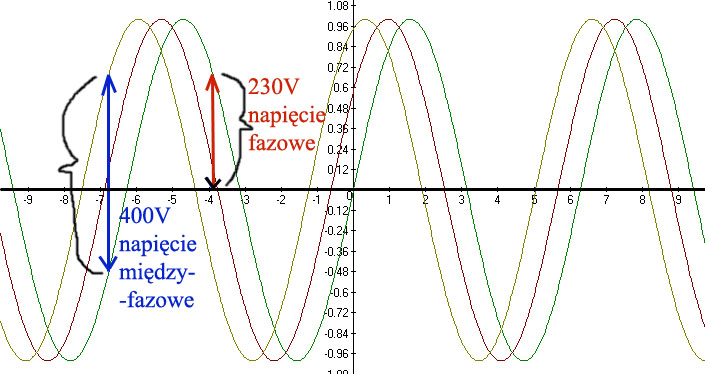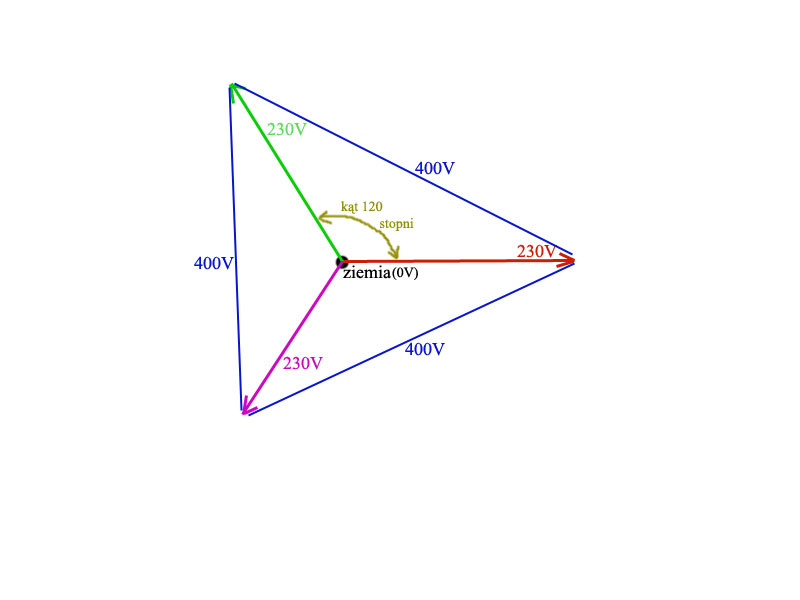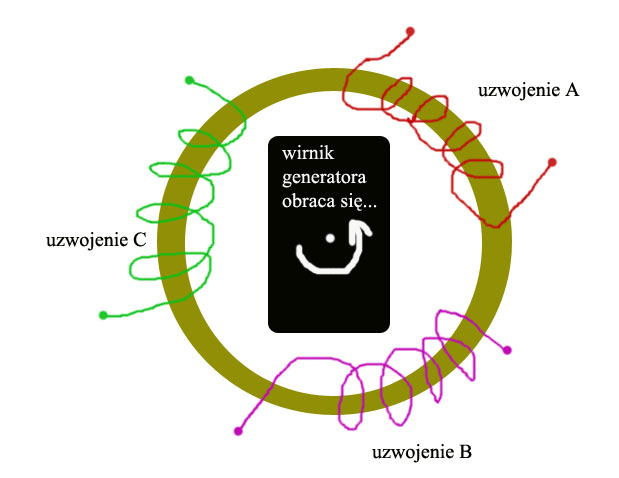Currently it is 400V, professionally 0.4kV in the LV network (phase-to-phase voltages are rated voltages).
The picture explains a bit.

RMS values are shown here, the image is just such a "freeze frame" to show the nominal values (obviously the phase-to-phase voltage is also a sine wave).
Phase voltage is the voltage between one phase and earth.
Interfacial tension is, as the name suggests, the voltage between two phases.
In vector form (phasor diagram) it looks like this:

Drawing "on the spot", so forgive the inaccuracy. :wink:
And the phase voltages are shifted because this is the structure of the generators. As the rotor rotates, it generates phase voltages successively over time. It is obvious, is it?

It's all about the topic.
Drawings made "by peasant reason", so they should help completely "green" people.






